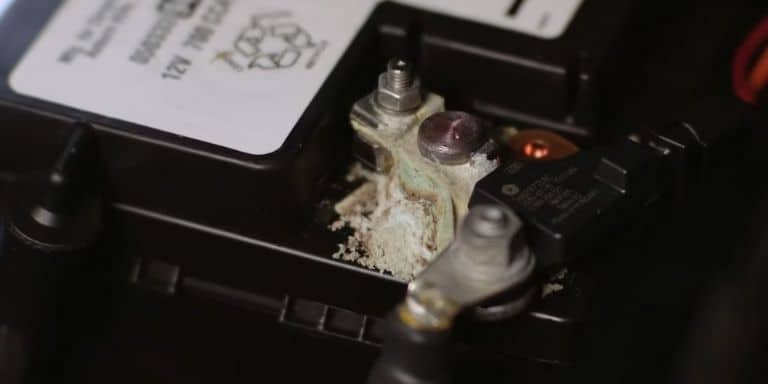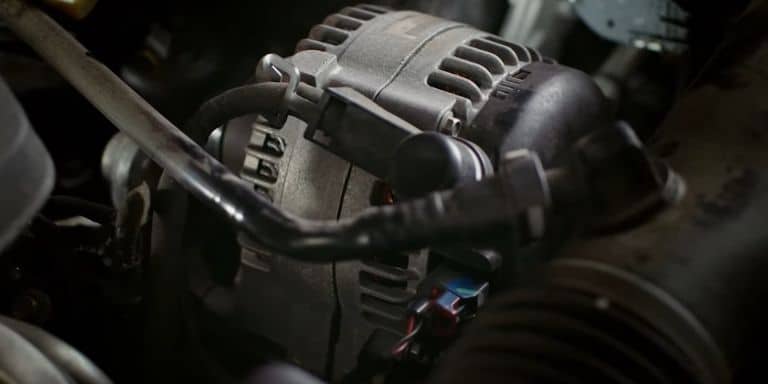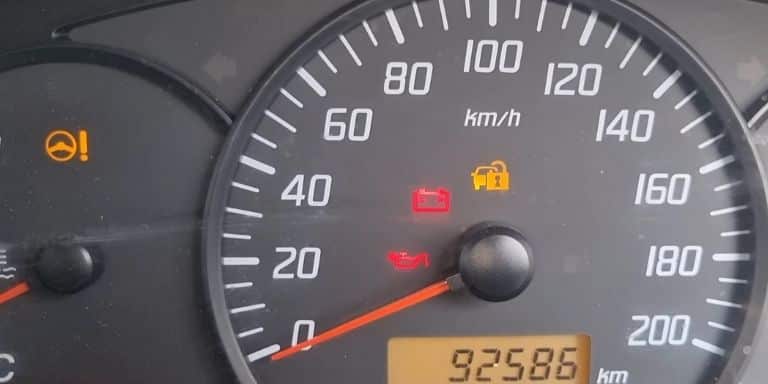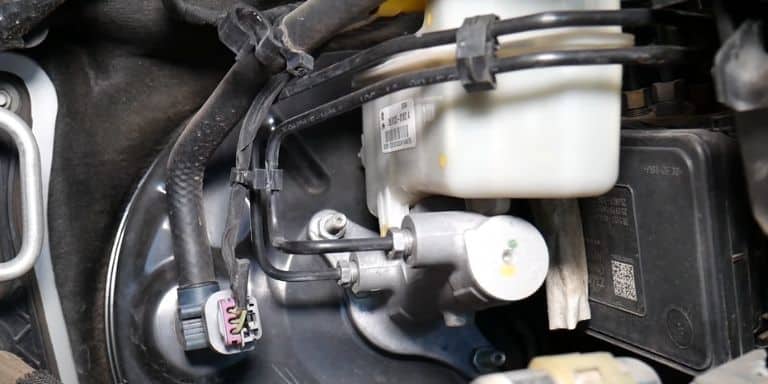It’s morning time, and you’re about to start the car.
There’s an important meeting to be attended, and you want to reach there before time.
However, the car doesn’t start when you turn the ignition key, even after trying multiple times.
You try to inspect the vehicle and find any possible reason for this issue, but everything seems to be fine – Except for the brake pedal, which is stiff.
Why is My Brake Pedal Locked, And Car Won’t start?
The most common reason for a stiff brake pedal is exhausted vacuum pressure due to the engine being off because the car is not starting. As for why the car is not starting, you should check the battery, alternator, starter motor, and ignition switch, as these are the common components that can cause your car not to start.
Does the above scenario sound familiar?
Well, it is for most people.
I recently encountered the same issue with my Nissan Altima 2019 and, given the dual nature of the problem, couldn’t find a solution for many hours.
Then, I talked with different mechanics and found that this issue is common across different vehicle brands, such as Honda, Hyundai, Volkswagen, etc.
8 Reasons Your Brake Pedal is Stiff While Car Won’t Start
In this post, we’ll discuss some of the common reasons for this issue and how you can fix them.
1. Dead Battery

Modern vehicles, such as my Nissan Altima 2019, feature power brake boosters that rely on the engine vacuum to assist the driver when they apply brakes.
When the car is off, and the engine is not running, there’s a small amount of vacuum present for the brake pedal – and you can press it without any issue.
But that vacuum amount is very low and exhausts after 3-4 brake presses. Consequently, the pedal gets stiffer with each press before you find it hard to press even slightly.
As for why your car is not starting, the first thing you should check is the dead battery.
If the battery is weak or dead, it won’t be able to energize the starter motor. As a result, the engine won’t start.
Many car owners rule out the possibility of a battery issue because they see the headlights and dashboard lights are turned on.
But they don’t realize these lights don’t need much power and can be turned on even by a weaker battery.
In comparison, the starter motor requires a powerful current jolt, which a weak battery can’t deliver.
Common signs of a weak battery include a battery warning light on the dashboard screen, corrosion on the terminals, the battery not holding the charge, the clicking sound when you turn the ignition key but the vehicle doesn’t start, etc.
But to confirm whether there’s an issue with the battery or not, you’ll need to test it with a multimeter.
Here’s what you need to do:
- Set the multimeter to Voltage mode at 20V.
- Connect the red multimeter probe to the positive terminal and the black problem to the negative terminal.
- If the reading is 12.5V-14.4V, the battery is good, and you should try to start the vehicle. The battery is bad if the reading drops below 10V when you start the engine.
- If the voltage is less than 12.5V with the engine off, the battery is weak.
As for the fix, you can jump-start your vehicle and go to the car dealership as soon as possible.
Once there, you can discuss with them whether the battery should be recharged/replaced depending on the severity of the damage. Sometimes, the battery is good, but the terminals get corroded, which results in a voltage drop.
Therefore, check for all possibilities before drawing any conclusion.
2. Bad Alternator

If you’ve tested your car battery with the multimeter and found it to be working fine, the alternator is the second thing to be checked.
Most people don’t realize that while the battery energizes the starter to crank the engine, the alternator is the component that powers all of the vehicle components once the engine is running.
Therefore, if your vehicle starts and then stops after some time, the alternator is not working properly.
3. Bad Starter or Starter Fuse

A bad starter motor is another component that can cause a vehicle not to start.
It engages with the flywheel to start the engine. Over time, this motor can go bad due to physical wear or electrical issues, which causes it not to engage with the crankshaft properly.
On some other occasions, the starter motor works fine, but its solenoid fails – resulting in the engine not starting.
Therefore, if your battery voltage is within the normal range and the alternator is also good, you should check the starter motor.
One common symptom of a bad starter is you hear a single click sound while turning on the ignition key (instead of a continuous clicking sound when the battery is weak).
Another thing you can check is the starter fuse. Like other components, the starter motor has a dedicated fuse that protects it against electrical overloads.
If there’s an overload, the fuse blows (its internal metal strip metals) and opens up the circuit. The electrical current cannot reach the circuit, and the starter motor doesn’t work.
So, go to your fuse box diagram, locate the starter fuse, and test it with a multimeter to confirm whether that’s the case or not.
4. Bad Neutral Safety Switch

The neutral safety switch is a feature found in automatic transmission vehicles, which allows the car to start only in ‘neutral’ or ‘parking’ gear positions.
Its main purpose is to ensure that the vehicle doesn’t start moving unintentionally when you crank the engine.
This switch can malfunction over time due to exposure to moisture, physical damage, aging, etc., making it unable to detect whether the gear selector is in neutral/parking positions. Consequently, the car won’t start.
To confirm whether that’s indeed the case, put the gear selector into different positions one by one and try to start the vehicle.
If the vehicle starts in only some gear positions, the neutral safety switch is bad and should be replaced.
5. Faulty Engine Immobilizer System

Another safety feature that can cause your car not to start is the engine immobilizer system.
This is an anti-theft feature that starts the engine only with the authorized key/key fob. This key/key fob has a transponder chip containing the security code, which corresponds with the immobilizer system of the vehicle.
It means that this system will prevent someone from starting your vehicle even if they somehow have duplicated your key (as their key is missing the transponder chip and security code) or hotwired the vehicle.
While this system is beneficial for car owners, it can malfunction if your key/key fob gets any physical damage. The system will not recognize a damaged key/key fob, and the vehicle will not start.
Therefore, physically inspect your key to confirm whether that’s the case or not.
6. Malfunctioning Ignition Switch
When you turn the key to start the vehicle (or push the start button in modern vehicles), the ignition switch completes the circuit to send electric current from the battery to the starter motor.
The starter motor then uses that current to engage with the flywheel to rotate the crankshaft and start the engine.
If this switch goes bad due to worn contacts, broken springs, etc., the starter motor will not get power, and your car won’t start.
Therefore, if you’ve checked your battery, alternator, starter motor, etc., and found no problem, it’s reasonable to check the ignition switch, too.
7. Seized Brake Calipers

The issues we’ve discussed so far only apply when your car is not starting and the brake pedal gets stiff after a few presses.
But what if the brake pedal is stiff before even a single press?
In that case, the first thing you’ll need to check is the brake caliper.
When you press the brake pedal to stop the vehicle, the brake calipers push the brake pads against the rotors. If these calipers get stuck, the brake pedal gets stiff sometimes due to the constant contact between the brake pads and rotors.
8. Vacuum Leaks

Vacuum leaks are another reason why you get a stiff brake pedal.
As I said earlier, the brake booster system relies on the vacuum coming from the engine when you apply brakes. When the engine is off, a small amount of vacuum is left in the brake pedal.
However, if there’s any leakage in the system, that small amount of vacuum will leak out of the vehicle, leaving you with a stiff brake pedal – even if you didn’t press it even once.
The most common area of these leakages is the vacuum hose, which can crack due to heat exposure. Therefore, physically inspect this hose to see if there are any visible cracks.
Another area you can check is the vacuum valves, as they can get loose over time and cause the vacuum to leak out through them.
For more info, you can check out this video.
Frequently Asked Questions
Why Is My Brake Pedal Hard Before I Start My Car?
If the brake pedal is hard before you start the car, it usually indicates a lack of vacuum pressure in the brake booster due to leakage.
Why Won’t My Car Start With A Bad Brake Light Switch?
If the brake light switch is not working, the vehicle’s computer will not be able to detect whether the brake pedal is pressed or not.
This will result in your car not being able to start, as many vehicles require you to press the brake pedal when starting the vehicle.
Can a Dead Battery Affect the Braking System?
No, a dead battery does not directly affect the brakes.
However, it can cause your car not to start, which can result in the brake pedal getting stiff as the vacuum pressure in it exhausts after 3-4 presses.
Can ABS Cause Brakes To Lock Up?
The ABS doesn’t cause the brakes to lock up (as it’s designed to prevent brake locking) unless there’s an issue with the braking system itself.
How Do You Know If Your Brake Fluid Is Low?
Some of the common symptoms associated with low brake fluid include the brake warning light on the dash screen, brake fluid discoloration, noisy brakes, the vehicle taking a longer time to stop, etc.
